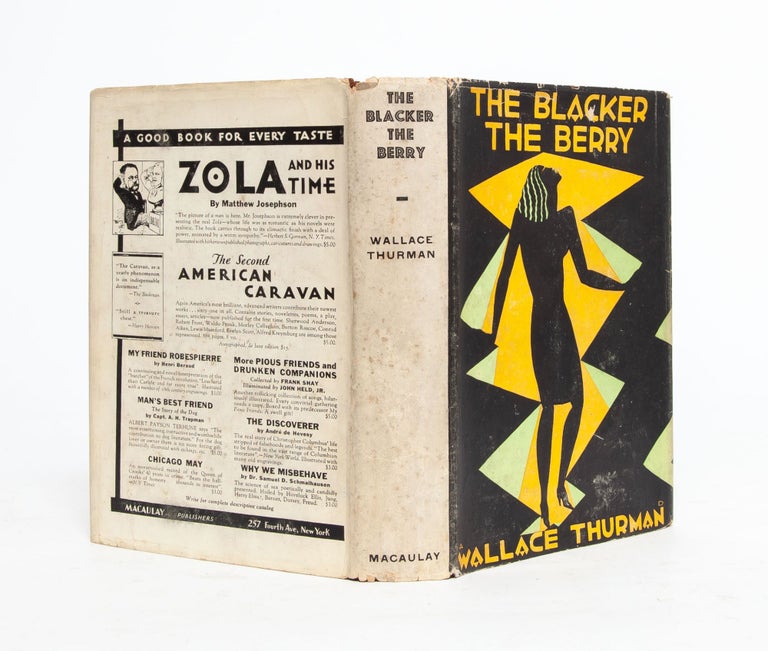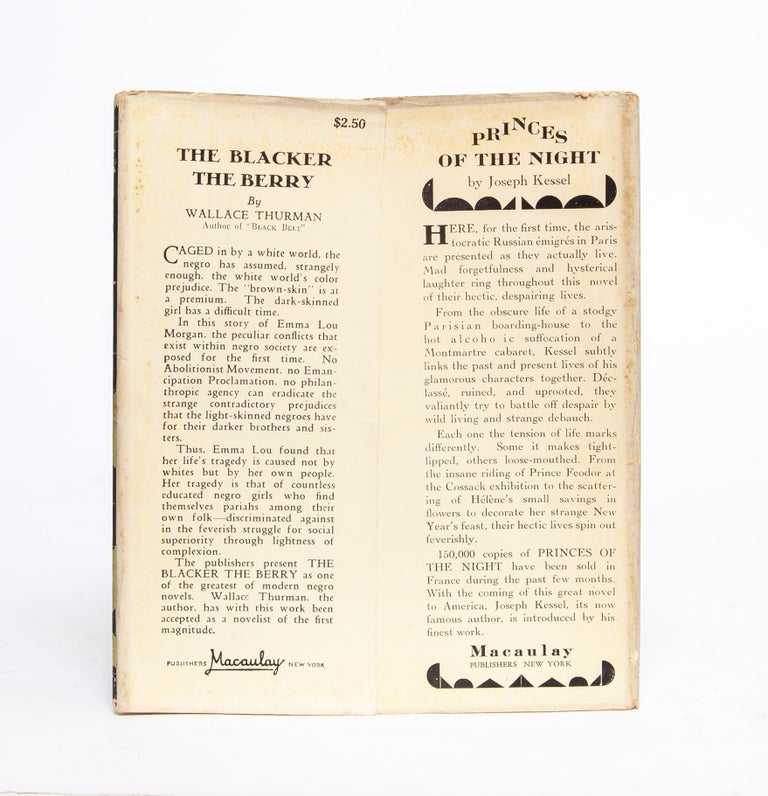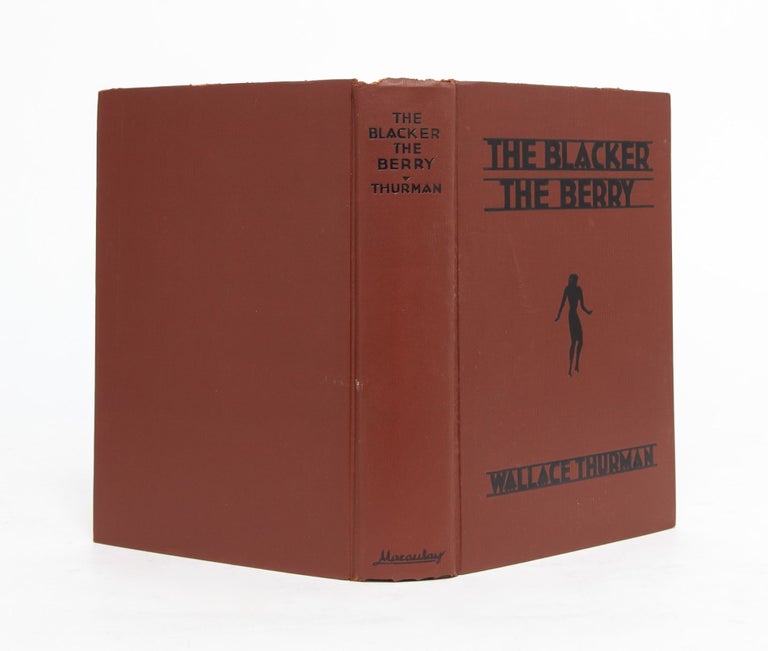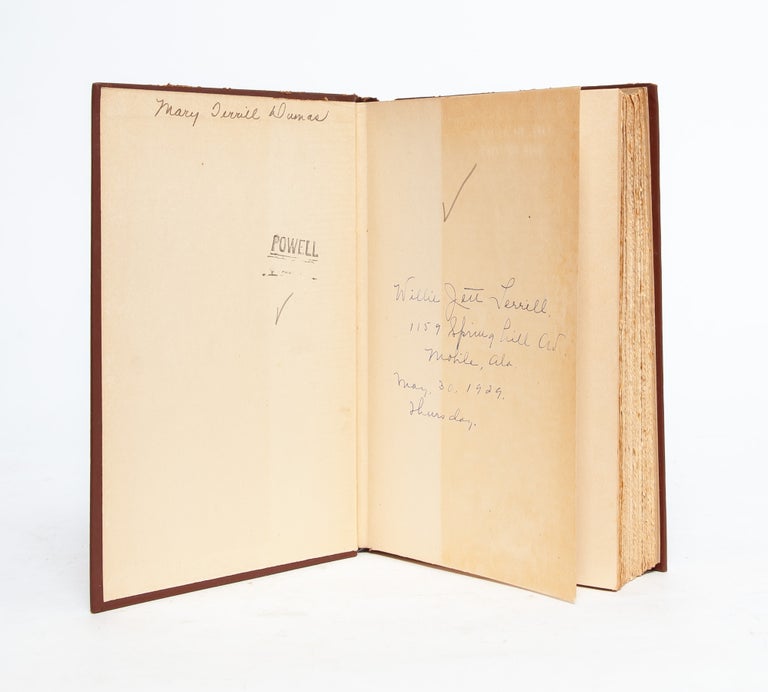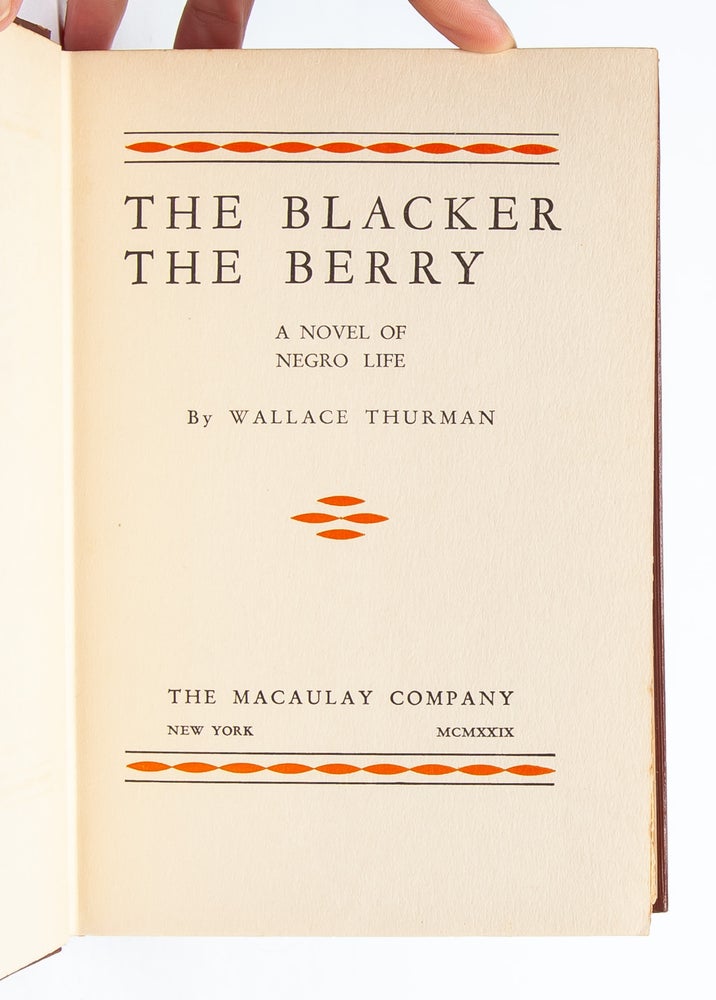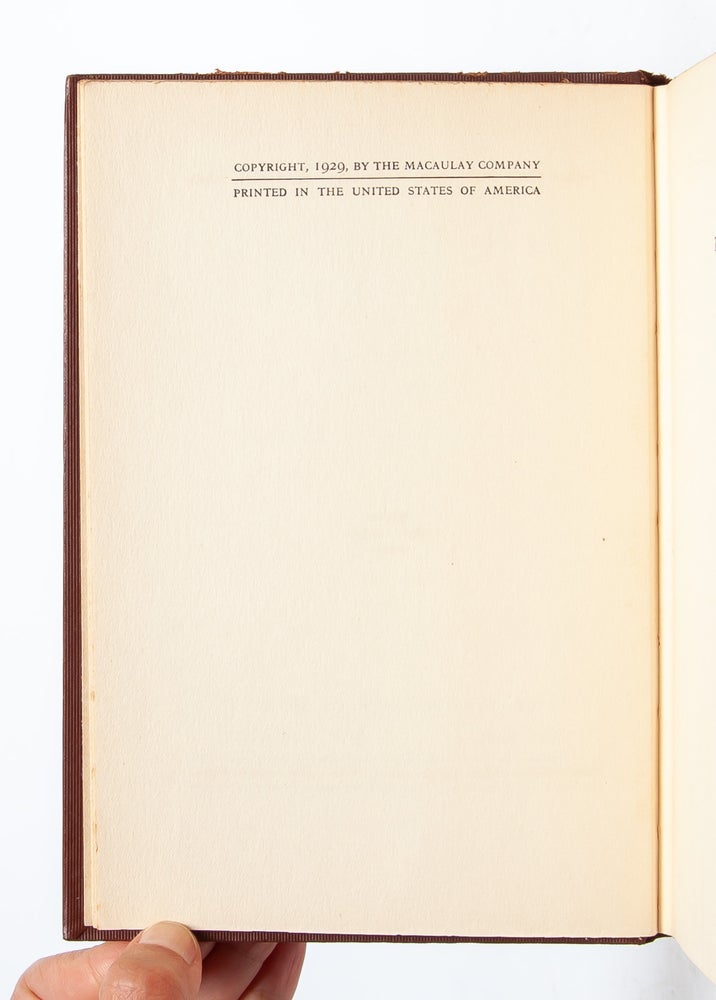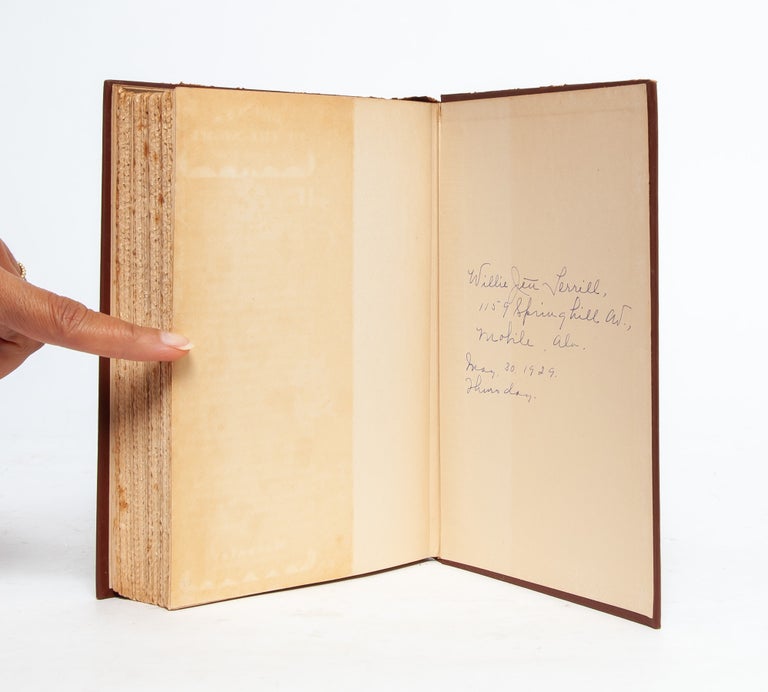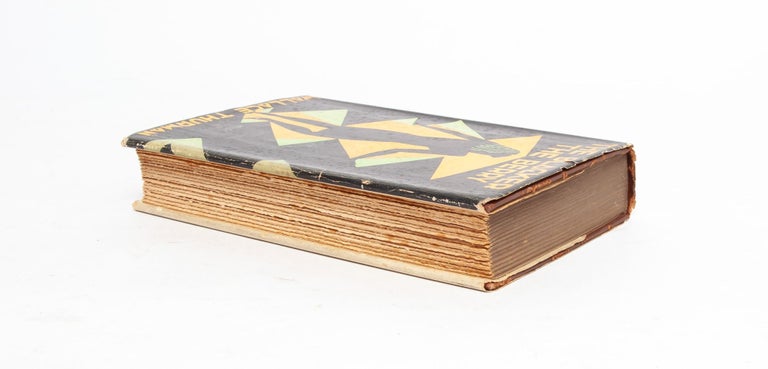The Blacker the Berry: A Novel of Negro Life
New York: Macaulay Company, 1929.
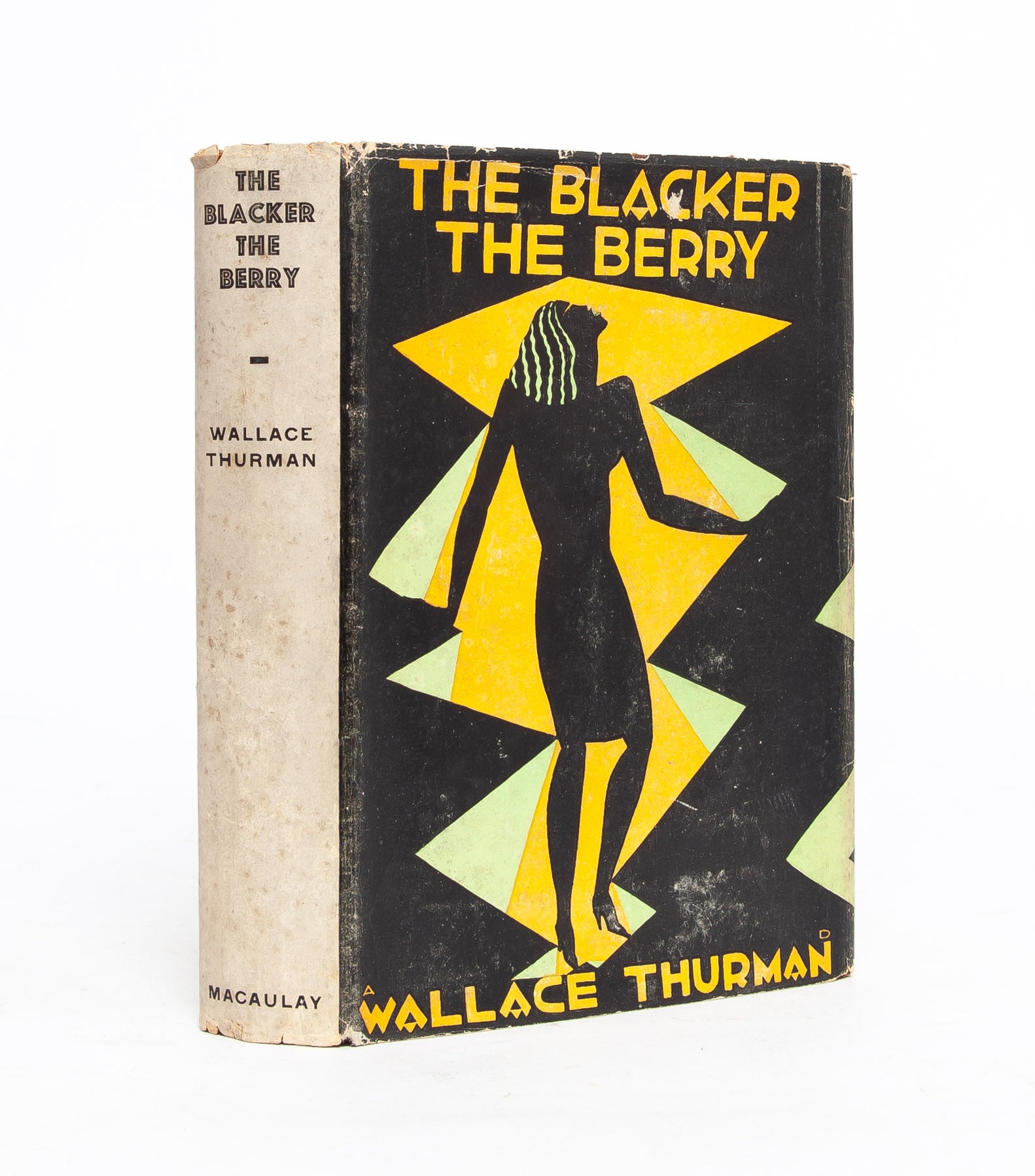

The Blacker the Berry: A Novel of Negro Life
New York: Macaulay Company, 1929. First edition. A Near Fine copy in like dust jacket. Contemporary owner's name and address on the front free and paper and rear paste-down, dated May 30, 1929. Another family member's name on the front paste-down and a small stamp that reads "Powell." Spine a bit cocked, slight wear to the board edges. Dust jacket complete and unrestored, appearing original to this copy of the book. Jacket designed by Aaron Douglas. Slight wear at the extremities, but a remarkable example, given how few of these have survived. No copy in jacket appears in the auction record.
"A source of controversy upon its 1929 publication, this novel was the first to openly address color prejudice among Black Americans" (University of Georgia). Deploying the gritty realism that had become a hallmark of Harlem Renaissance fiction, Thurman presents a narrative about the deeply entrenched white supremacists attitudes that have insidiously ingrained themselves into Black communities and individuals; and he exposes the resulting internalized racism that urges Black people to seek to shed their own blackness generation by generation in pursuit of a white ideal. Thurman's novel follows Emma Lou, a protagonist who despairs of her skin's darkness while living in a rural Black community that hopes "to get whiter and whiter ever generation" and who presents a contrast to her matriarchs' placement in "an elite circle of Black Americans who are fair skinned" (Rottenberg). Emma Lou not only has to contend with the racism of white people; she is also "the ostracized member of her family and their exclusive social set...whose hue is constantly evoked with disdain" (Rottenberg). Throughout the novel, Emma Lou gets further removed from her family and community, ultimately rejecting them to seek a new life first in Los Angeles and then in Harlem. Though she sees Harlem as a place of promise, "Emma Lou discovers that though the largest Black metropolis is indeed unlike any other space, it is not by any means a panacea for all her woes" (Rottenberg). Indeed, so many of them come from the views infused into her by her family and society at large.
The Blacker the Berry made history for its critique of color prejudice within Black spaces; it has also increasingly gained attention for its depictions of disability and "sexuality outside the confines of marriage and heteronormativity" (Rottenberg). In this sense, Thurman "makes it clear that Harlem is more than a Black mecca...it is a site of considerable--even revolutionary--social and personal possibilities, a stage for upheavals and transformations of identity that could reorganize and complicate the way the self is perceived and presented" (Scott). Near Fine in Near Fine dust jacket. (Item #5178)

